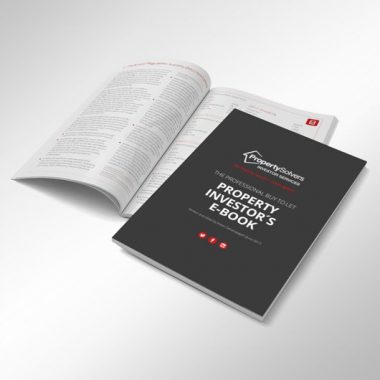The first edition of the PS Investor Services eBook has been compiled in a buy-to-let operational environment where, particularly in recent years, recurring fiscal and regulatory intervention has seemingly become customary.
The 28,000+ word digital document aims to dissect the principal issues of concern in the coming years and will be of interest to investor-landlords who embrace a longer term and professional outlook to property wealth accumulation.
Readers will also find hints, tips and and a wide range of up-to-date resources relevant to the buy-to-let industry’s fast-changing operational environment. Please click here or fill your details in our contact box to receive the e-book (as well as our financial calculator and accompanying notes).
The easily accessible PDF has been split into 10 chapters, broadly outlined below:
- Formally introduced in January 2017, the core aim of the Prudential Regulation Authority (PRA) revised affordability criteria is to “prevent loosening in current industry standards for buy-to-let underwriting, curtail inappropriate lending and reduce the potential for excessive credit losses”. In essence, these stricter standards ultimately mean that, to meet stress tested debt-servicing requirements, investor landlords will need to commit additional sums of equity to secure financing. We examine some of the important considerations from the policy itself, disclosure requirements, calculations and provide some guidance as to how active investors can best position themselves moving forward;
- Informally referred to as the “tenant”, “Alice in Wonderland” and “revenue” taxes, the former Chancellor George Osborne´s summer 2015 budget set in motion an unprecedented process of tapered erosion of mortgage interest tax relief on individually owned property. Kindly reviewed by Simon Misiewicz of Optimise Accountants, this chapter focuses on the real implications of Section 24 of the Finance Act 2015 for landlords alongside the relative pros and cons of various “mitigation” strategies currently being disseminated across the sector;
- The new operational environment has highlighted the need for investors to have a solid understanding of both the broader and localised factors affecting any given property investment. Alongside the fiscal and regulatory changes, it has therefore become fundamental to keep up to date with the ebbs and flows of the market at all levels to facilitate non-speculative investment decisions. In this chapter, we list and briefly describe 135 useful “macro” due diligence tools of interest to professional buy-to-let property investors and developers;
- We list 56 “micro” due diligence tools and resources to engage in detailed research on comparable property prices, trading data, socio-demographic research, local housing affordability, distance checking, physical / environmental conditions, development-related topics amongst others. These resources and platforms are worth using as part of a more focused investigation of a given buy-to-let opportunity;
- A list of 28 rental market due diligence / management tools for detailed insights into key trends, yields and other relevant observations;
- Given the regional variabilities in labour costs and often unpredictable nature of such works, accurately estimating refurbishment values is a relatively subjective task – even with so-called “vanilla” and relatively simple redecoration / cosmetic updating projects. We link to over 20 trade bodies and useful resources to help you create sustainable ties with professional tradespeople, deliver good quality rental housing and ultimately maximise return on investment;
- A summary of the Buy-to-Let Financial Calculator‘s functionality, built to aid investors´ability to engage in more judicious single-let residential analysis. Initially put together in Microsoft Excel, our objective has been to provide users with both a high level and granular overview of key metrics necessary to interpret the relevant characteristics (positive and negative) of a modern day buy-to-let investment. The calculator also enables users to “stress test” various parameters (such as price points, cost inflation, interest rate rises, voids and a range of other factors). Note that our accompanying notes that will also be forwarded to your inbox upon signing up;
- Bearing in mind that capital costs and associated fees are likely to be higher and Loan to Value (LTV) requirements lower, given the unavoidable repercussions of Section 24 of the Finance (No.2) Act 2015 on personally owned properties, PS Investor Services are generally advocating incorporated buy-to-let acquisitions. Given the top-down market restrictions mentioned above, we explore how investor’s can efficiently and cost-effectively acquire property using a Limited company (Special Purpose Vehicle) structure;
- In the final chapter, we explain how PS Investor Services operate as direct to vendor cash property buyers alongside our necessary credentials as a professional and fully-regulated sourcing company.
—
Access the report by either clicking here or completing the “JOIN OUR E-MAIL LIST” form (confirmation will be required). If you have previously subscribed to our newsletter and have not received the files, please feel free to email us at info@psinvestors.co.uk. Please also use this email address to forward us your comments and feedback or to discuss your individual investment objectives.









